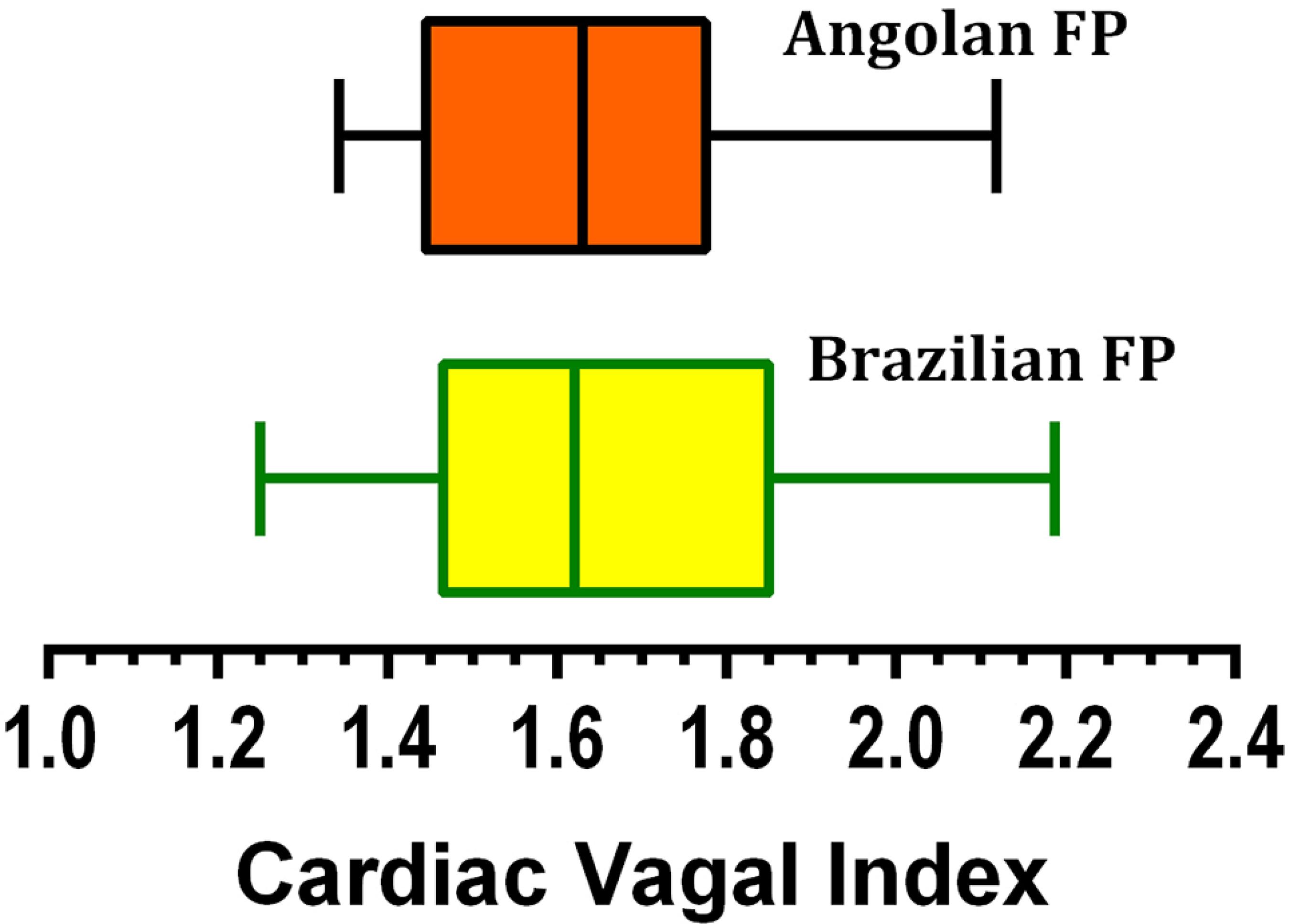BACKGROUND:
Cardiac vagal index (CVI) is supposedly higher in athletes and may differ between sports and/or between field positions.
OBJECTIVE:
To compare CVI: a) between elite football players vs. non-athletes and b) according to five football positions.
METHOD:
242 football players of the first Brazilian/Angolan division were divided in five positions (N): goalkeepers (17), defenders (44), wingers (34), midfielders (87) and forwarders (60) and compared with 303 age-matched healthy non-athletes. CVI was estimated from a 4-second exercise test by quantifying the ratio of two cardiac cycle durations, before and at the end of a fast unloaded cycling exercise.
RESULTS:
Football players had resting and maximal heart rates of, respectively, 59 and 190 bpm and measured VO2max of 62.2 mL/(kg.min). Players and non-athletes showed similar CVI results (median-[P25-P75]) - 1.63-[1.46-1.84] vs 1.61-[1.41-1.81] (p = 0.22). Wingers tended to have a higher CVI (1.84-[1.60-1.99]), especially when compared to defenders (1.53-[1.41-1.72] (p = 0.01). There was a modest non-physiologically relevant association between VO2max and CVI (r = 0.15).
CONCLUSIONS:
Football players did not differ from non-athletes in CVI; however, among players, wingers were more often vagotonic, which may represent a hemodynamic advantage for match situations, where rapid heart rate transitions and faster oxygen delivery to muscles are required.
KEYWORDS:
Sports; Autonomic nervous system; Heart rate; 4-second exercise test; Parasympathetic activity





